When walking the aisles of the Dallas Safari Club Convention, I always enjoy seeing the handiwork of those bespoke rifle makers and smaller rifle shops. While SHOT Show has a huge selection of firearms, ranging from airguns to the latest high-tech black rifles, the DSC Convention is geared more toward hunters. If you want to hold the finest double rifle or a rifle made specifically for the most rugged terrain on earth, it’ll be at DSC.
Bradshaw Gun & Rifle is renowned for rising-block single-shot and double rifles, as well as the side lever falling-block designs. But after catching up a bit, I spied a unique rifle among Bradshaw’s better-known stuff, one with a perfectly round receiver; I was immediately intrigued. “This is my take on the Hoenig-style rifle, but this one is a single-shot,” he said.
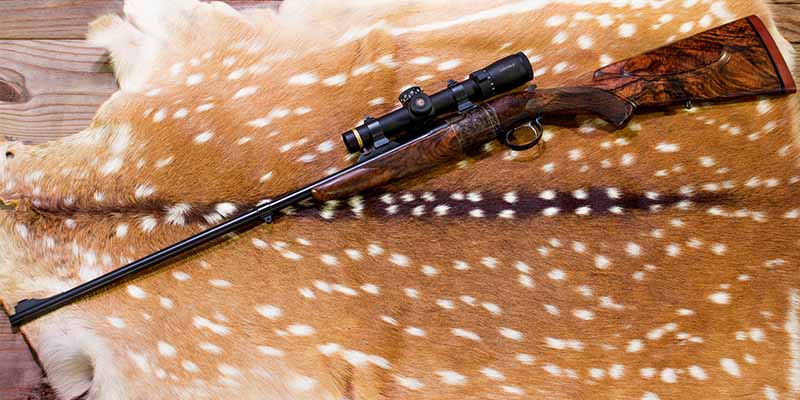
What Bradshaw handed me was one of the lightest and most well-balanced stalking rifles I’ve ever handled. With its cylindrical action, the BRSS sits so comfortably in the hand when carried that it hardly feels like a firearm. There are no squared metal edges on the receiver, and the way Bradshaw has stocked the rifle, the weight belies the length of the gun.
I politely asked Bradshaw if he’d send one out for review, as I was drooling at the thought of spending some time with this rifle. Bradshaw obliged, sending out a handsomely adorned example, chambered in 7x57R, a perfect all-around choice for a single-shot.
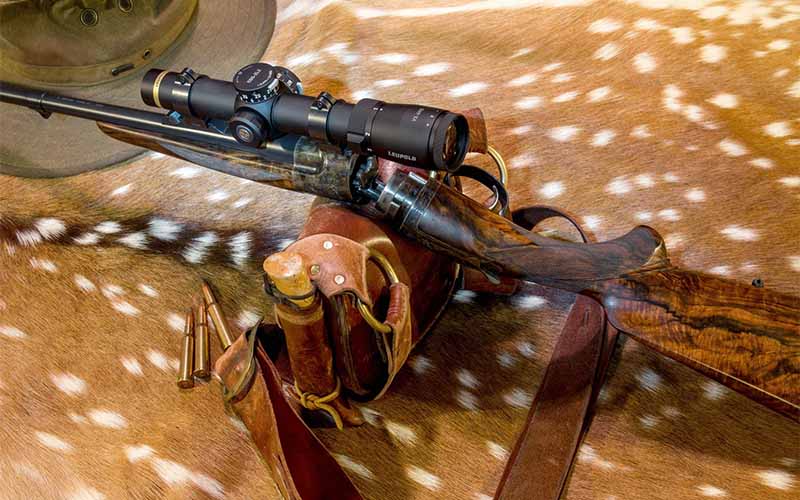
I Thought ‘Rotary’ Was A Telephone
In order to safely seal the breech of a centerfire rifle and still successfully handle the pressures generated during the firing of the cartridge, several different methods have been employed over the past 150 years. For many of the single-shot designs, a break-action with a locking lever is common, as is the very strong falling block, which uses a lever to raise and lower a large block of steel to seal the breech. For repeating rifles like the common bolt-action (or “turnbolt,” as it’s called across the pond), a strong steel bolt with extended lugs is run into a raceway and turned at 50 to 90 degrees, locking the bolt closed.
The rotary action—slightly oval in cross-section—used in the Bradshaw BRSS is, upon examination, a sort of enlarged version of the bolt-action theory. Simply put, the rifle comes in two parts, with the butt end having what you could consider functioning as the bolt face, and the forend having the receiver and extractor. With the butt rotated 90 degrees counterclockwise, a hinged, protruding “key” on the butt end is inserted into a cutout in the face of the forend, and the entire butt is pushed forward until the lugs of the rear slide into the raceways of the fore. Once inserted, the butt portion is then rotated 90 degrees clockwise, locking the action.
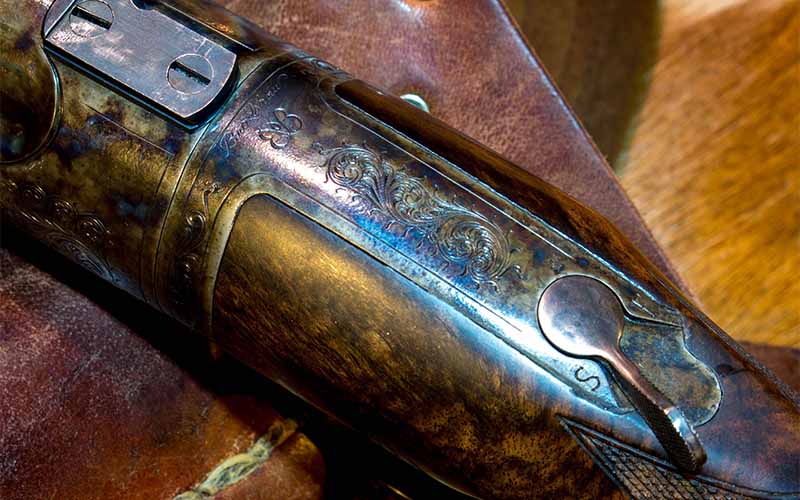
After the rifle has been fired, the butt is again rotated 90 degrees counterclockwise and pulled slightly rearward to open the action. The hinge in the key allows the open action to be tilted just enough to remove the spent case (or cartridge in the case of unloading). The breech face and keyed arm has a cocking cam that pushes the striker into cocked position when the action is opened. The BRSS has small lug in the key that pulls the extractor rearward, so the cartridge/case may be removed by hand, as there is no ejector. The firearm has a small top lever that functions as the safety; when swung to the left, the rifle is on safe, and when swung to the right, it may be fired.
Built For The Stalk
The concept of a single-shot rifle evokes a different mindset. Though I firmly believe making the first shot count with any rifle is paramount, when you carry a single-shot … it seems to change the game a bit.
With a single-shot rifle, there is no magazine to add length to the gun, so the overall package can and will be both shorter and lighter. Combine that fact with the slim and sleek barrel contour Bradshaw has chosen for the 7x57R—I measured the barrel diameter at 0.622 inch at the midpoint and 0.520 inch at the muzzle—and the lack of weight should be readily apparent.
But, in addition to slender metalwork, Bradshaw stocked the rifle perfectly. This is no corpulent, cookie-cutter stock design that betrays the scheme of the barreled action. No, this is a svelte stock design with a splinter forend, a rear stock featuring a thin, open wrist, shadow-line cheekpiece and a 14½-inch length-of-pull that fits me perfectly. Bradshaw has balanced the lightweight barreled action with a stock that gives only what the shooter needs—and not a toothpick’s worth of wood more. It’s very refreshing to find a gunmaker who knows what to take off a stock, rather than leaving too much.
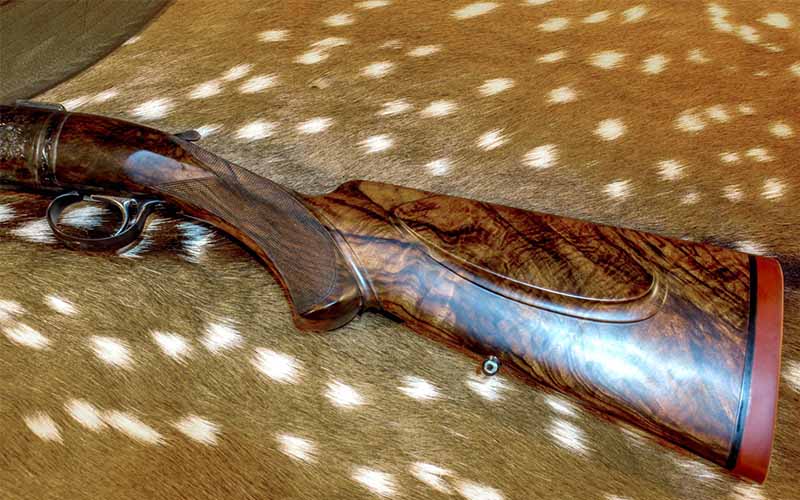
The butt culminates in a classic red recoil pad, fitted properly to the figured walnut stock. And what a figure it has! It’s the type of stock that you could stare at for hours, getting lost in the figure and three-dimensional aspects of the premium walnut. Checkered exquisitely fore and aft with classy lines and angles, Bradshaw has a stock worthy of note. There’s a round rear sling swivel stud on the rear stock, and a barrel band sling swivel stud just ahead of the forend tip.
The BRSS is equipped with iron sights—a fine brass bead front sight and a 140-degree-wide V rear sight—in addition to offering the option for a scope. The rear portion of the rear sight island serves as one of the scope ring bases, and a second is affixed atop of the forward portion of the cylindrical action, keeping the scope on the front half of the rifle. Bradshaw installed Talley bases so the rifle could be scoped.
How It Came To Be
I asked Bradshaw for the story of the development of his unique twist on an already unique design, and he gladly obliged:
“The story really starts with a string of failures … struggling for over five years with designing and manufacturing falling block double rifles,” Bradshaw said. “I lost count of how many versions I designed and tested, but it was more than I care to recall. The end result was an over-complicated, bulky and ‘not-so-fun-to-manufacture’ action. I made several serviceable falling block doubles, but they were never the rifle I had envisioned as my ideal.

“I came across Ron Spomer’s article on the Hoenig rotary action and immediately searched Google Patents to get an understanding of how the action works,” added Bradshaw. “This all took place in 2016 and 2017. I noticed Mr. Hoenig’s patent expired in 2015 and decided I would like to try to build a rotary action for my own use—but as single shot and not a double rifle, as Mr. Hoenig typically made. I set about turning an action on my lathe, and an idea hit me: What George Hoenig did by condensing a bolt action into his rotary action, I could do with turning a falling block into my rising-block action. Two weeks later, I had a prototype rising-block single-shot action. The next four years were devoted to perfecting and marketing my rising-block singles and double rifles.”
“Fast-forward to the fall of 2020, and the acquisition of a CNC lathe,” continued Bradshaw. “I decided to revisit the rotary actions. I started with building a prototype SXS rotary action, which I didn’t care for. It was a little bulky for my taste and cumbersome to reload compared to my rising-block doubles. Focusing on the rotary action single-shots, they developed into something I very much enjoy. I carried and hunted with the prototype chambered in 7x65R for two years. Many hogs and coyotes have been taken with the rifle, but its shining attribute is how easily it carries in the field, and how easily it breaks down for travel. The action being oval instead of completely round sets the single-shot version apart, in my opinion.”
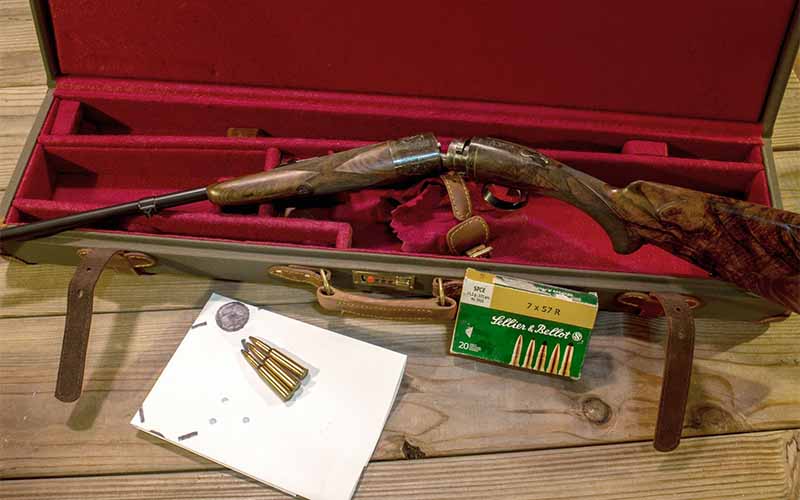
“I did change a couple of features from Mr. Hoenig’s original design,” admitted Bradshaw. “The first is the safety, which isn’t a drastic departure. Though it operates in a similar fashion to the original design, I just changed it from a horizontal arrangement to vertical. The second change was to the link that connects the rotating breech to the barrel ring. Mr. Hoenig designed the link with a spring-loaded latch. With the action open, pulling the extractor out from the extracted position disengages the link latch, allowing the receiver and barrels to be separated. It was one more part to make, fit, time and tune. I went with a more simplified ‘keyed dowel’ arrangement that requires less work to manufacture, yet it offers every bit of the function and simplicity of the overall design. I also changed the length of the hinge of the rotating breech and link, providing a stop to limit how much the action gaps open for extracting and reloading.”
“My design philosophy is to build actions as simple as possible, with an absolute economy of parts, and to build those parts very robustly to ensure strength and longevity,” said Bradshaw. “I also put a huge emphasis on building sleek, low profile, good handling and shootable rifles. The rotary action, and my rising-block actions, both fit all of the above criteria. It’s a good place to be as a designer and manufacturer.”
Mr. Bradshaw, I couldn’t agree more.
A Classic Cartridge
The 7×57 Mauser hearkens back to the 19th century, being developed by Peter Paul Mauser in 1892 and adopted as Spain’s military cartridge in 1893. It would be this cartridge in the Spanish-American War that’d serve as the inspiration for the U.S. Army to ultimately develop the .30-06 Springfield. Like so many cartridges of the late 19th and early 20th centuries, the rimless cartridges were offered in a rimmed variant for single and double rifles; the 7x57mm Mauser was no exception.
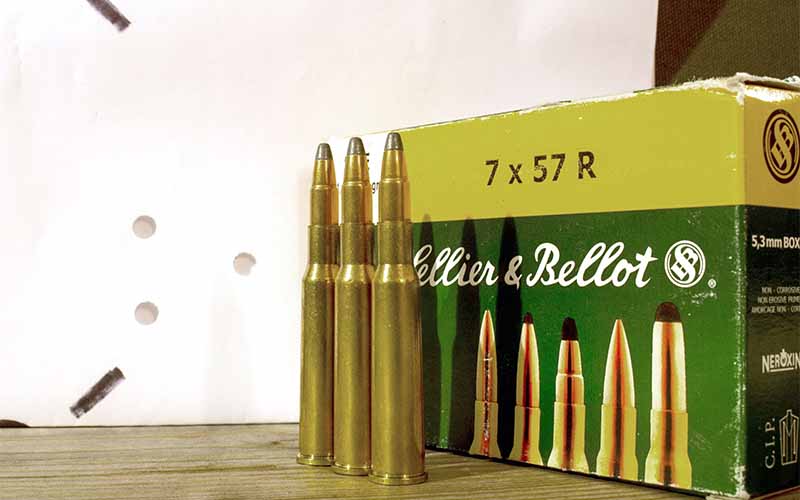
Dubbed the 7x57R (R for rimmed), it’s identical in dimension and performance to the rimless variety, except for the base and rim. While nowhere near as popular as the rimless version, it remains a sound choice for all-around hunting. For test ammo, I used Sellier & Bellot’s 173-grain load, at a muzzle velocity of 2,379 fps. The late 19th century formula of heavy-for-caliber bullets at a moderate muzzle velocity worked just fine then, and it will do the same in the early 21st century. Boxer primed, these cartridges are fully reloadable.
Home On The Range
To test the accuracy of this lightweight wonder, I mounted a Leupold VX-6HD 1-6x24mm scope in Talley 30mm rings, and I set up the 100-yard target. The first thing I noted was the smooth trigger pull (according to my Lyman digital trigger scale, it broke consistently at 3 pounds, 4 ounces) with just a bit of creep and almost no overtravel. Recoil was more than manageable.

As you might expect with a rifle that tips the scales at 5 pounds, 11 ounces—unscoped—and with a pencil-thin barrel, there was an appreciable amount of muzzle jump. While my first thought was that getting back on target quickly might be an issue, that thought faded when I realized I had to bring the rifle off my shoulder to reload it anyway, so that was no issue.
Because of the thin barrel—which heats up quickly—I limited groups to three shots, and the Bradshaw BRSS consistently put three of those 173-grain slugs into a group measuring 1.2 inches (again, on that 100-yard target). I’m certain that this rifle would benefit from a custom handload, but for a factory load, that’s plenty accurate enough for hunting purposes.
The Wrap
There’s a demand for heirloom-quality rifles—and looking for such a rifle made in the USA is a daunting task. The Bradshaw BRSS fits the bill perfectly; it’s a gentleman’s rifle, worthy of passing on to your children and built to last several lifetimes. This is no cookie-cutter rifle, and it will assuredly stand out in the crowd.
Bradshaw spared no expense on the rifle I tested, save gold inlays; the color case hardening, scroll engraving, hand-cut checkering and fine stock lines all scream “bespoke rifle.” This gun starts at $7,500; in the configuration pictured here in this article, it’s $9,500. I can only imagine the amount of time it takes one pair of hands to complete this rifle—you’re getting a functional piece of art, so keep that in mind when considering the price.
The test rifle had an amazing piece of walnut, hand-worked to the point where I’d get lost just looking at it. The rifle has balance, handsome lines and exudes craftsmanship. The action, which may seem foreign at first, quickly becomes natural. I can only imagine how pleasant it would be to carry this lightweight rifle in the African heat when on the tracks of eland or kudu. The compact design would be right at home in a leopard blind—where you only get one shot—or when sitting on a bear bait. Though I might have concerns about scratching it up in the deer woods, I can’t imagine a nicer choice for still hunting whitetails.
Bradshaw offers the BRSS in any rimmed cartridge, from .22 Hornet to 9.3x74R, so there are plenty of excellent options. I wonder what a .300 H&H Flanged might feel like in this gun, and if you wanted something completely unique, you could inquire about the possibility of a .350 Rigby No. 2 or a .333 Jeffery Flanged. Bespoke is, after all, bespoke.
I truly enjoyed my time with the Bradshaw BRSS and was saddened to see it head back to Bradshaw’s shop. Maybe one day I’ll have one of my own, but for now, you and I both can feed our daydreams at BradshawGunAndRifle.com.
Editor’s Note: This article originally appeared in the July 2023 issue of Gun Digest the Magazine.
More Hunting Rifles:
 NEXT STEP: Download Your Free Storm Tactical Printable Target Pack
NEXT STEP: Download Your Free Storm Tactical Printable Target Pack
62 Printable MOA Targets with DOT Drills – Rifle Range in YARDS This impressive target pack from our friends at Storm Tactical contains 62 printable targets for rifle and handgun range use. Target grids and bullseye sizes are in MOA. Ideal for long-range shooting!
Subscribe to the Gun Digest email newsletter and we’ll send your print-at-home target pack right away. Just enter your email address below.
